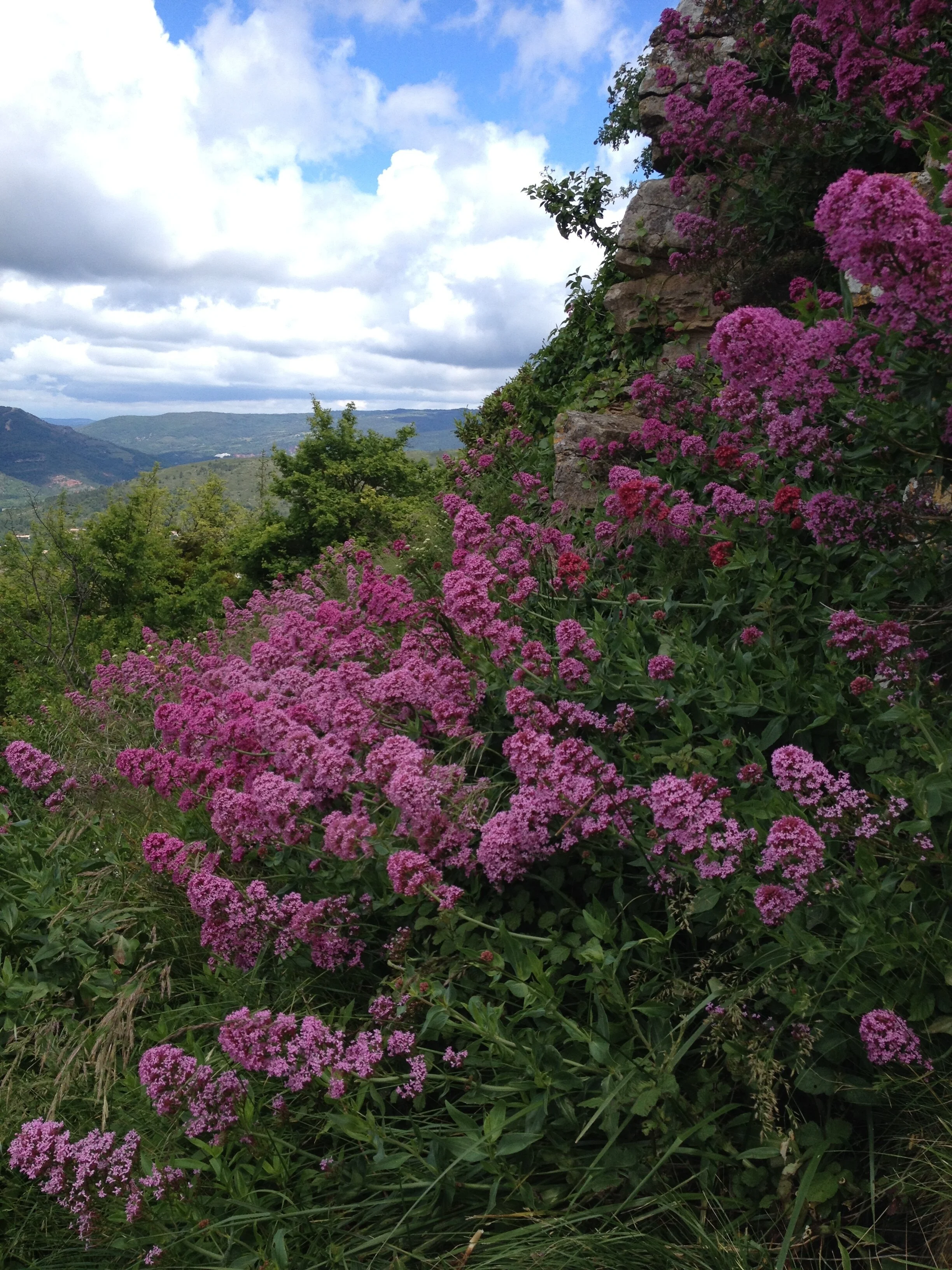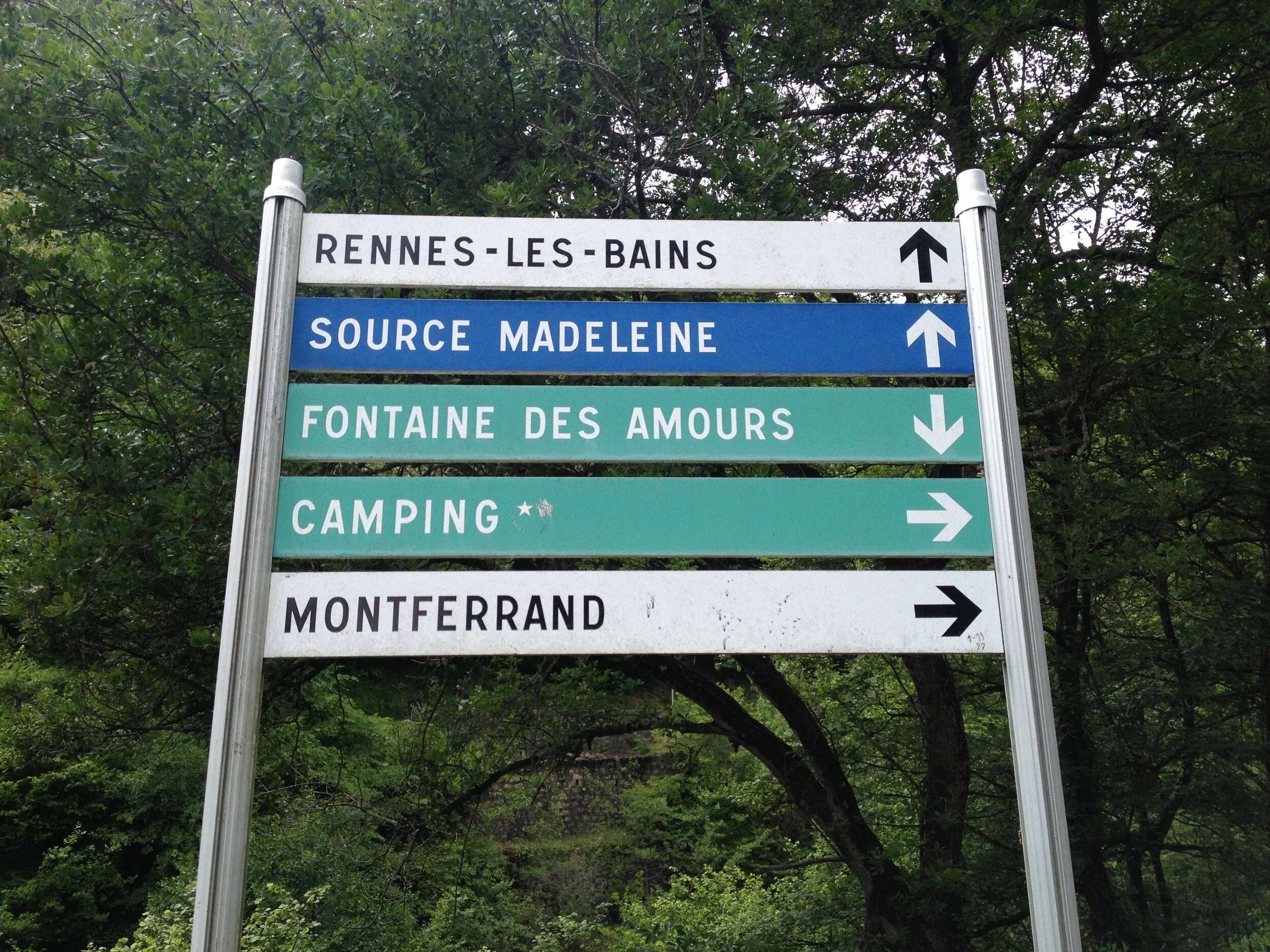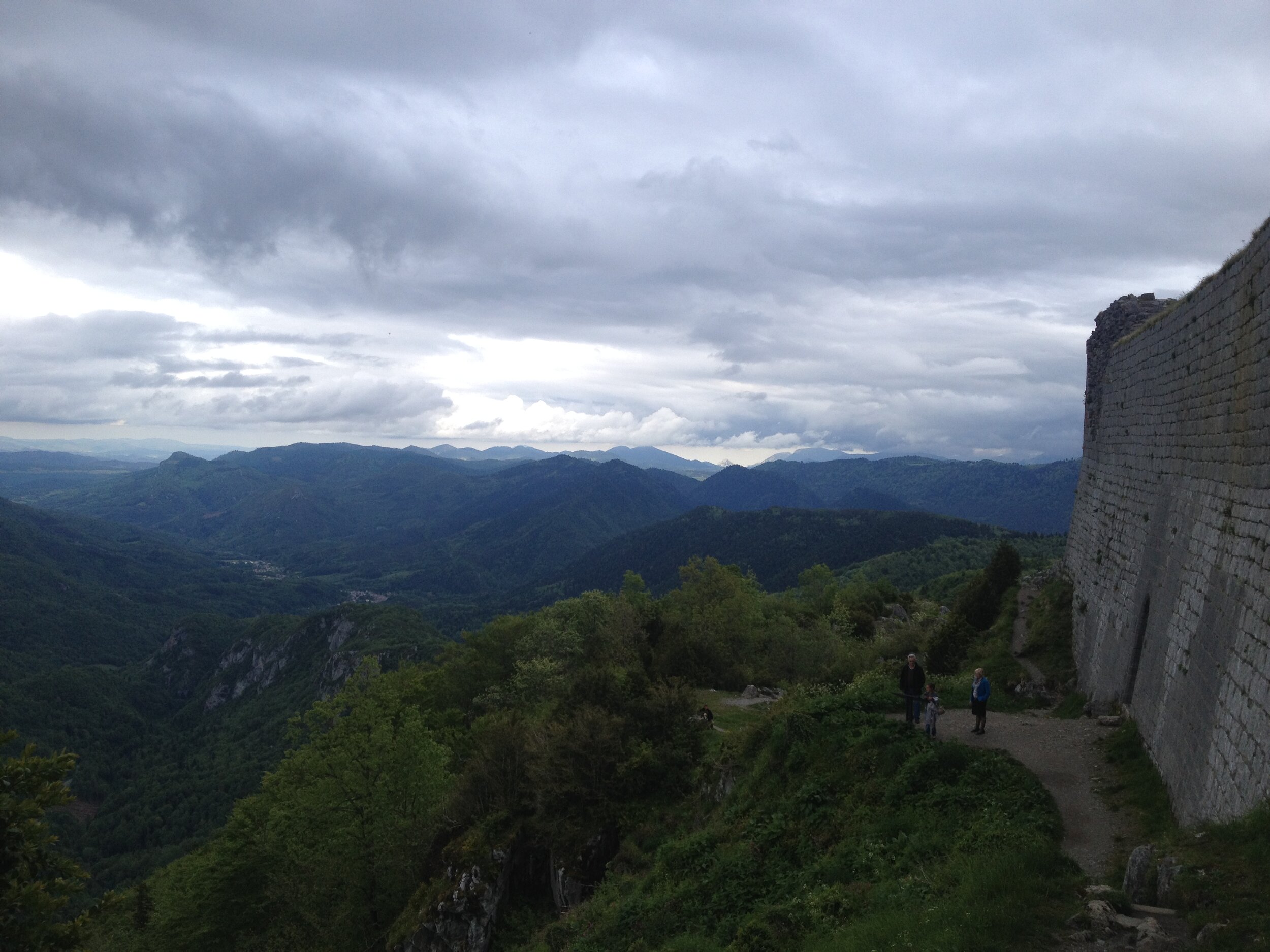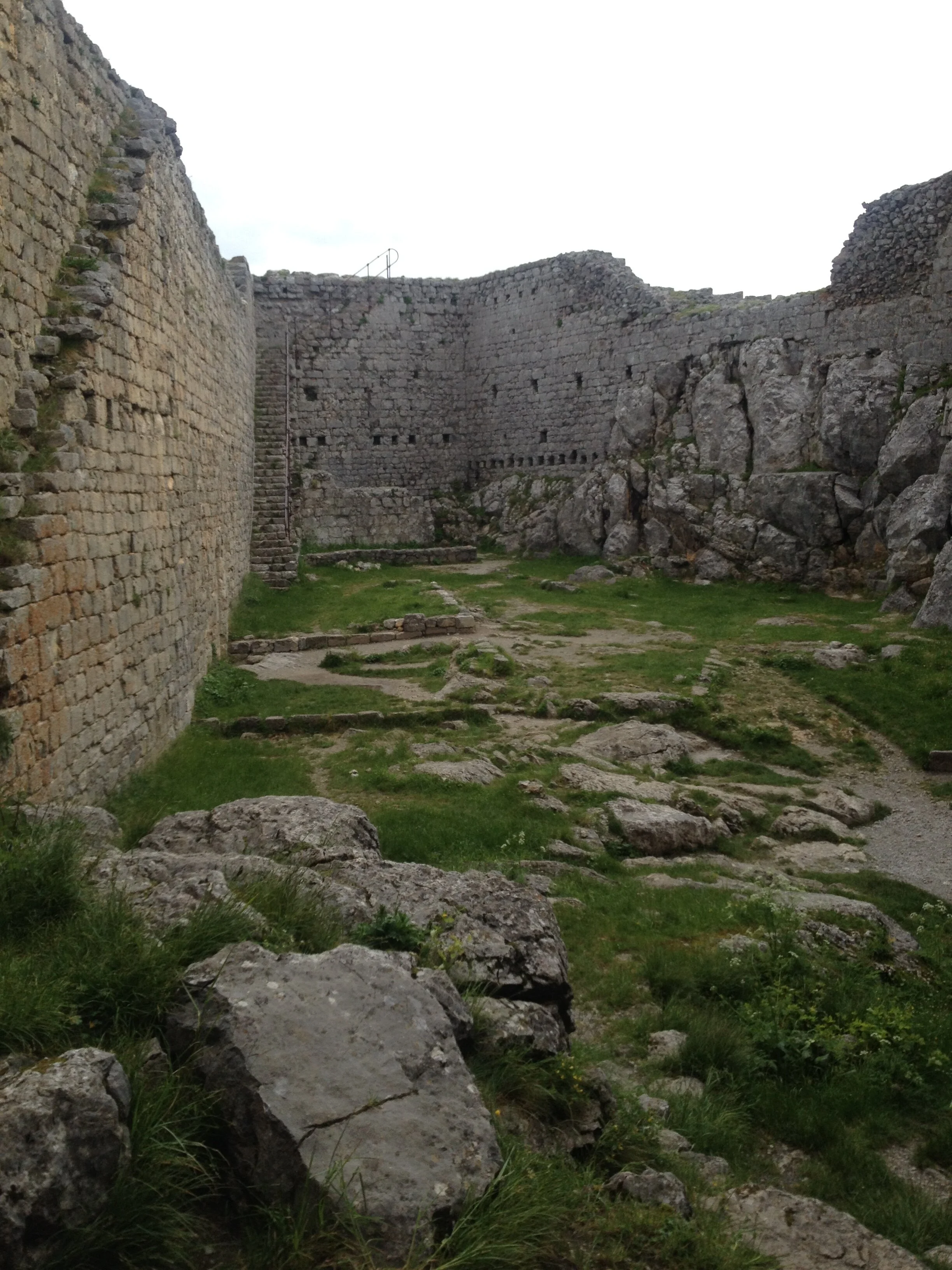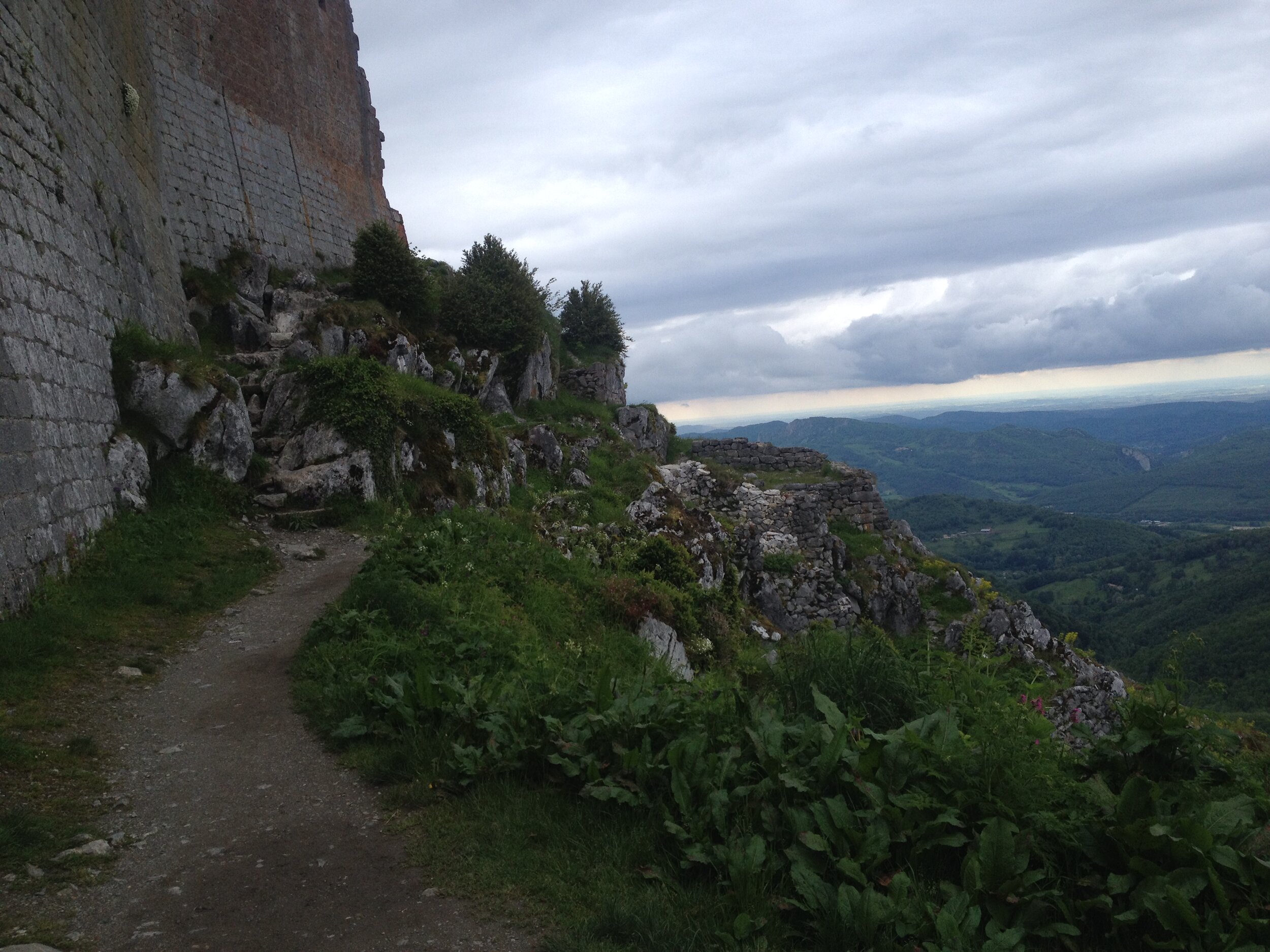FINDING MARY MAGDALENE BLOG SERIES.
“Languedoc Part 3: Finding Mary Magdalene”
Originally Published: June 19th, 2014
Coming off my “angelic high” from the previous day’s journey to Alet-les-Bains, I awoke and prepared for another driving adventure in France. You may remember that I had previously mentioned the terror I experienced at the mere thought of driving in France. When the time finally came, the only “challenge” I had was finding a gas station among the bountiful vineyards. My second driving experience, however, was not as charming.
I took a shuttle bus to the Carcassonne airport only to discover the car rental place was not actually located at the airport; and to make matters worse, it required me take a taxi to the rental office. Crisis averted, I got the car, set my GPS in English mode, and took off for the nearest gas station. There was, however, a minor problem. The station had no gas attendant on duty to take my cash, and because my American credit cards lack a “chip,” the French card machine would not take them.
So, off I went in search of a mega gas station. Again, I encountered the same problem. I kindly asked another driver what was going on and he informed me that because it was a national holiday in France, the gas attendant would not be on duty.
Well! That would surely pose a problem with just a quarter tank of gas and several sites to visit.
I drove back to the agency and explained my dilemma, of which he could offer me no solution, but ensured me there would be a station along the way in Limoux.
Off I went. By the seventh try, I was desperate. I sat at the pump wondering what to do. Then, as if by divine intervention, an attractive man with shoulder length curly hair, pulled up in a vehicle I would certainly label a “hippie van.” He must have sensed I have a thing for the gypsy type! I realized this was my chance. As he was pumping gas, I casually got out of my car, and approached him. Turning on the charm, I smiled and asked if he spoke English. “No,” he said, fainning apology. “Okay, no problem,” I mumbled to myself, “I’ll try in French.” So off I went about my “grand problème,” and he got it! Not only did he get it, but he offered to put the gas on his credit card in exchange for my cash!
Emergency averted, I took off for the destination du jour, Rennes-le-Chateau. To my amazement, and slight embarrasment, the very next gas station I passed had an attendant on duty. Obviously, there was an important lesson I needed to learn regarding flirting and French men.
International fame hit Rennes-le-Chateau with Dan Brown’s Da Vinci Code. However, decades before, the tiny town had become notorious for the scandalous parish priest, François Bérenger Saunière. Supposedly, he had discovered a hidden treasure on its grounds. Some say it was actual golden treasure, while others believed it was the remains of Mary Magdalene. Further more, Saunière was said to hold secret information about Jesus and Mary Magdalene.
After several winding turns, I arrived at the little mountaintop village of Rennes-le-Chateau. I walked through the quiet streets toward the abbey, stopping at a gift shop along the route. Decked with books and jewelry and music - pretty much all things spiritual - I had the sneaking feeling that something quite unspiritual was brewing.
Somehow, I ended up buying a ticket for the museum, which was a conspiracy theorist’s dream. The museum gift shop even sold Rennes-le-Chateau wine, bearing Saunière’s face. Despite the lack of depth, I did find delight in the Magdal Tower, built on church grounds by Saunière.
According to Margaret Starbird, Magdal (from Magdala) means “The Tower” in Hebrew. She contends that the town of Magdala did not exist during the lifetime of Jesus and Mary, so it is more plausible that Magdala (Magdalene) was not Mary Magdalene’s given name. For Starbird, this suggests that Magdala was a name given to Mary Magdalene to denote her strength and wisdom within the community of Jesus and his followers, eventually earning her the title of “Apostle to the Apostles.”
The church of Rennes-le-Chateau was tiny and darkly lit. I knew in my heart that the spirit of Mary was not there; the energy had become more about the drama and intrigue of the Saunière story and less about her story. Mid-meditation, a camera crew entered the small church, filming a very important person, and his entourage. Images of Mary Magdalene were numerous, yet I found myself annoyed by the “scene” of Rennes-le-Chateau, and quickly left for solitude just outside the town walls. The surrounding grounds were beautiful and lush, and despite my overall misgivings, I feel there may lay a secret of Mary hidden within the hills of Rennes-le-Chateau.
I eagerly left Rennes-le-Chateau, but first, made time to enjoy a fabulous lavender creme brûlée.
Next I drove to nearby spa town, Rennes-les-Bains. I was mesmerized by its beauty and vibrant energy. Hippies littered the streets. Inside I jumped for joy. Along the ancient pathways and the river of Rennes-les-Bains, one can find such glorious sites as the Seat of Isis, The Source Madeleine, and the Fountain of Lovers; where, legend has it, if you and your lover bathe naked in its waters, you’ll be lovers for all time.
Sadly, I was out of time. I left Rennes-les-Bains—promising to return soon—for Mt. Bugarach, a supposed former Essene community tucked away in the Pyrenees. I took a stroll through its empty ancient streets, admiring Mt. Bugarach, as it loomed over the city; a stoic protector of an ancient lineage forever in hiding from the ancient Roman Empire.
Severely behind schedule and over my allotted mileage, I decided to head to Montségur. To miss such a sight was not an option for me. Despite overwhelming car-sickness, I drove like the wind through the endlessly winding roads of the Pyrenees. After much anxiety and doubt that I would ever reach Montségur, my GPS informed me I was 5 kilometers from my destination. A heavy mist hung in the air, as I drove further into the heart of the Pyrenees and Cathar country.
I looked up and was overcome by the view of a fortress nestled high upon a mountain peak. “How stunning!” I exclaimed to myself. “How beautiful and majestic. But that CAN’T be Montségur. I only have 5 kilometers left…I’ll have to visit that site next time I’m in the region.” Ten minutes later, as I approached the town of Montségur, I realized that that fortress was indeed, Montségur.
Seeing the fortress high above me, I parked my car and prepared myself for the ascent. The path was rocky and steep, but I felt encouraged by fellow pilgrims. Along the route I could hear the melodic ringing of bells, dangling from the necks of cows, far off in the distance. As I approached the summit I turned to look out among the sea of mountain peaks, and was rendered nearly speechless. “This must be what Heaven looks like,” I whispered. For as far as the eye could see, were voluptuous green mountain peaks, extending outward past Spain, and reaching what I imagined to be, the Atlantic Ocean.
Face-to-face with the now abandoned majestic fortress of Montségur, I imagined life streaming in and out of it’s stone walls. I entered the fortress and a sudden stillness came over me, as if I were walking into someone’s intimate space. The inner walls of the fortress held the laughter of children. I could almost see them playing hide and seek. I realized there was a presence still lingering from the trauma of long ago.
Montségur gained notoriety for being the last stronghold of the Cathars in the face of the Crusades. History has mixed understanding of the Cathars, with the most commonly held belief that the Cathars were a serious acetic religion that believed the material world to be sinful, and therefore devoted all their attention and energy to the spiritual realm. In esoteric circles it is believed that the Cathars were actually the keepers of an original Gnostic Christianity. Their primary teacher, Mary Magdalene. And, depending on who you talk to, Jesus as well. The Cathar faith and belief held the knowledge of the Holy Grail, which was protected by the Knight Templar, and had connections to the activist medieval love poets, the Troubadours. To read Joseph Campbell’s exciting commentary on the Troubadours, click here:
https://journey-to-the-goddess.tumblr.com/post/86396881610/marriage-in-the-middle-agesas-in-most-of
The Church launched a full-out crusade against the Cathars and region of Languedoc. They slaughtered and burned them, until only those of Montségur were left. After a year siege, the water supply within the high fortress of Montségur failed, leaving the Cathars with no choice but to surrender. The Church, feeling “generous,” gave the Cathars the option to convert to Catholicism and be saved, or be burned at the stake. After a 15 days truce, it was over. All 200 Cathars - men, women, and children - calmly walked down the mountain and into the burning pyres. And that was, essentially, the end of the Cathars. Some believe a few escaped and kept the knowledge alive. Still others say those who escaped kept the royal bloodline of Mary and Jesus alive.
Upon my descent, I looked out at the endless horizon and wondered what it was like for the Cathars, in the face of certain death, to see this view for the last time. So I chose to honor the Cathars the only way I knew how: by infusing each step I took down the mountain with honor and dignity, for a people willing to die for their beliefs.
My drive home was full of emotion. The mystique of the Pyrenees faded into perfectly manicured rolling vineyards, and country houses made of stone.
I returned my car without problem and made my way back to Carcassonne. Suddenly, I realized my pilgrimage was officially over. I smiled as I reflected on the months of planning and hard work it took to prepare for this pilgrimage, that resulted in a life changing two week adventure. The icing on the cake? On the following day I would be turning 31 in my new favorite French city, Arles.
~~~~~~~~~~~~~~~~~~~~~~~~~~~~~~~~~~~~~~~~~~~~~~~~~~~~~~~
My heart bursting with love, I traveled from Arles to Nice and from Nice down into Italy. An open invitation awaited me in Ischia. Tears fell from my face as I crossed over the French border into Italy. For this self-proclaimed Italophile, something new was blooming inside, something unexpected: a yearning to return to the southern region of France, where Mary Magdalene is honored and revered as a woman of courage, devotion, and passionate love. Her name and reputation have been dirtied for nearly 2,000 years, as a way to manipulate and control people. One result, women have been placed secondary to men. This, as history is our witness, is a great disservice to women and men alike.
Although back in the states, my quest for Mary Magdalene has only just begun. Many others have come before me, and surely there will be plenty to follow. To France and back, my search for Mary Magdalene has led me back to me. My journey is her journey, and from this place of wisdom, I am truly finding myself.




